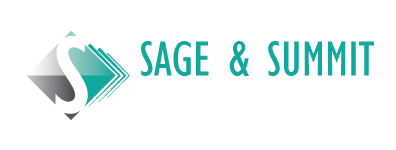One of the buzzwords that received a large amount of buzz-worthiness during the pandemic is EDI – Equity Diversity and Inclusion. And the question is, how does your workplace stack up in terms of EDI? Probably like everybody else – great on D for Diversity; Equity and Inclusion are thrown in because they are part of the acronym. We propose that having a diverse workforce in 2021 is almost inevitable. However, Equity and Inclusion are the tough nuts in the mix.
Diversity refers to having the full spectrum of human demographic differences — race, religion, gender, sexual orientation, age, socio-economic status or physical disability – represented in the workforce. Some companies consider different demographics as well — lifestyles, personality characteristics, perspectives, opinions, family composition, education level or tenure, elements of diversity as well. Think about it as a chorus or a symphony orchestra where you choose a diverse range of instruments and vocalities to produce a strong and beautiful sound. Most workplaces can do the math and prove that they have a diverse workforce. According to a Deloitte study, 69% of executives deem a diverse workforce as a very important issue – diversity has moved from “nice-to-do”, to “have-to-do” for ethical and business reasons.
The challenges lie very strongly in the E and I of EDI – Equity and Inclusion.
- Inclusion refers to a workplace culture and environment of belonging. A workplace where employees feel appreciated, respected, accepted, and encouraged to fully participate, safely share ideas and be their authentic selves.
- Equity refers to the same group of people having equitable access to growth and development, recognition and promotion. Equity excludes tokenism.
Conditions for a Culture of Inclusion
Adding women or people of colour to the executive will look great, but doesn’t necessarily change the culture to value, and respect their contributions. Where diversity refers to who is on the team, inclusion speaks to who is in the game. A culture of inclusion opens the game up to everyone.
- The first aspect here is psychological safety.
Psychological safety is tangible in teams where all members are free to contribute and share their insights without feeling embarrassed, with no fear of retribution or fear that their input will damage relationships, or their reputation in any way. At Google, a study to find out why their teams are effective, concluded that it was not so much who was on the team, but how they interacted and structured their work and viewed their contributions that made all the difference.
- Educate everyone, at all levels about bias reduction.
If you are human, you have biases. Period. Some of these biases are explicit, you know about them and can talk about it. Some of them are implicit, hidden in the dark caverns of your mind and surprise you at times. The topic is not, which biases you have, it is how to recognize them and eliminate or manage them. Unattended biases play out in micro aggressions, sarcasm, and disrespect.
- Foster a culture of respect, value and appreciation.
Culture is like a chocolate fountain, it runs or trickles down from the top. Leaders have to be intentional about creating a culture where all people are treated with respect, feel valued and heard, and know their input and thoughts are appreciated.
Conditions for Equity
Transparency and fairness are the key here. When employees perceive that there is bias in hiring, assigning work, developing and growth, promotion and compensation, no EDI effort will ever stick. Without strong policies and procedures that promote Equity and Inclusion, nobody will really believe that the company is committed to the cause.
In a fervent drive for visible equity, we have to caution companies – beware of tokenism. Colouring in the human palette of the Board or the executive team to be more PC, is tokenism. As soon as a new appointed token realizes they are there to look good and not contribute, they could (and should) leave, and high turnover damages the organization, and is very costly.
Lori George Billingsley, Global Chief Diversity and Inclusion, Coca Cola, shares that, “Inclusion is so much harder to achieve and measure because it’s more about a mindset.”
Note: This article refers to an underrepresented group as any group of people who are underrepresented in an organization.
Sources:
Brownlee, D. (2019, September 15). The Dangers Of Mistaking Diversity For Inclusion In The Workplace. Forbes. https://www.forbes.com/sites/danabrownlee/2019/09/15/the-dangers-of-mistaking-diversity-for-inclusion-in-the-workplace/?sh=3bedb4034d86
Washington, E., & Patrick, C. (2018, September 17). 3 Requirements for a Diverse and Inclusive Culture. Gallup. https://www.gallup.com/workplace/242138/requirements-diverse-inclusive-culture.aspx

